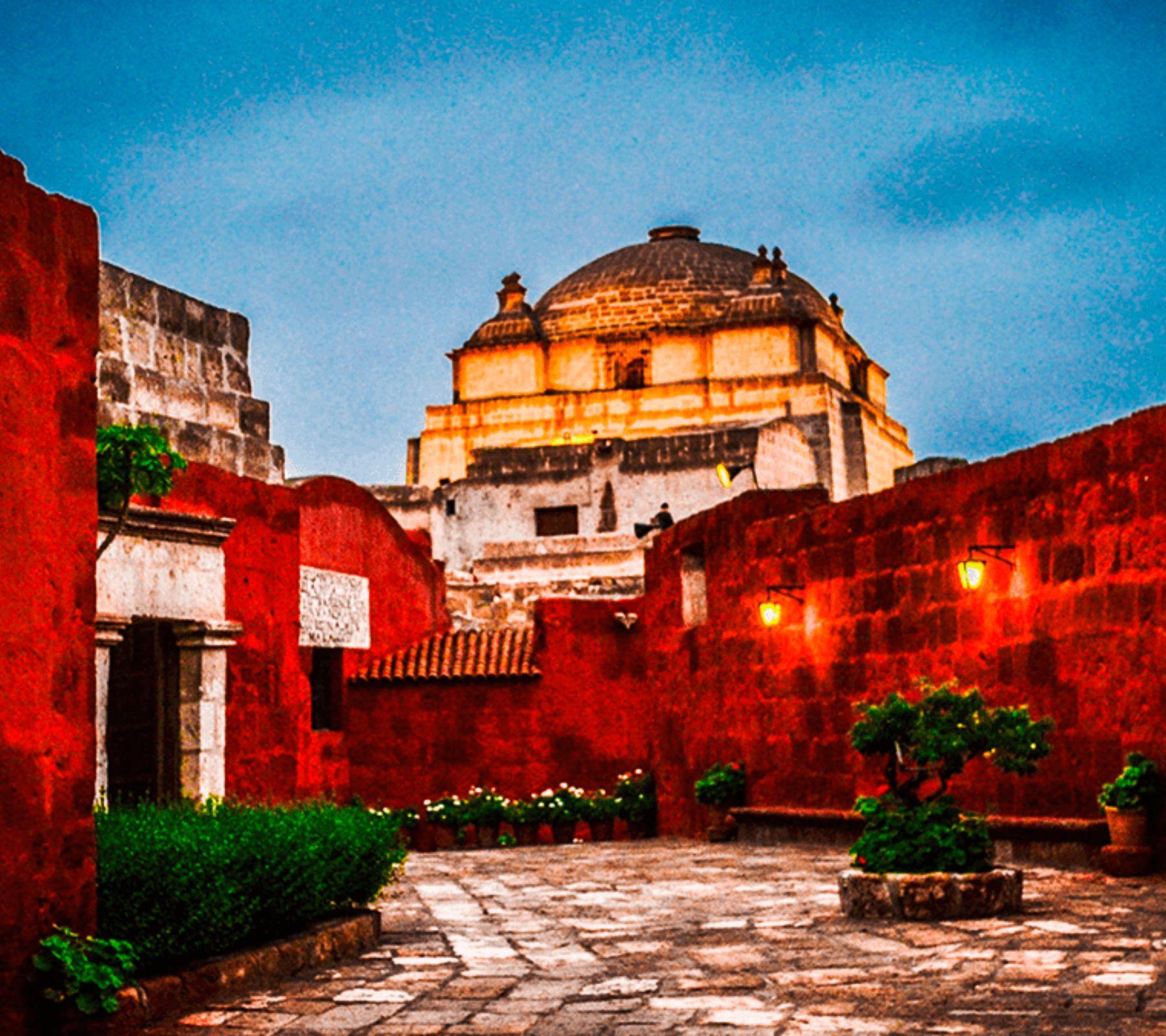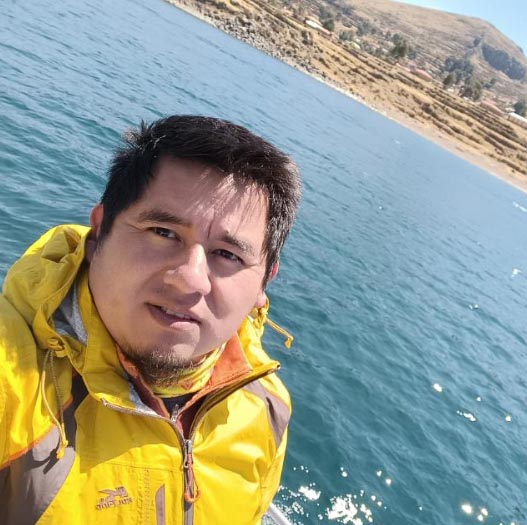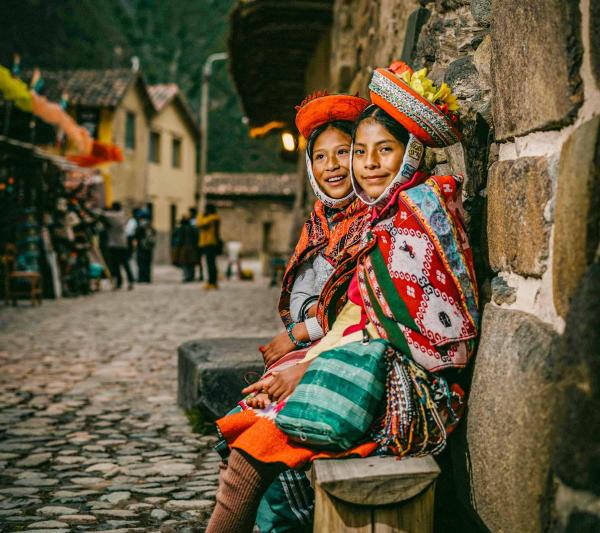Saint Catherine of Siena is the saint who inspired this monastery, where silence found its voice in the vivid colors of its walls and in the cobbled passageways that converge on the beautiful main square.
A citadel of women dedicated to prayer, charity and the making of the most delicious desserts the palate can imagine; Santa Catalina is, more than a monastery, a melting pot of secrets that the visitor can barely glimpse through its walls, but whose truth will remain within its walls forever.
Just a few steps from the Plaza de Armas of Arequipa is the Monastery of Santa Catalina, an enigmatic place that surprises not only for its colorful colonial architecture but also for the secrets that, for several centuries, it has hidden behind its walls. Read below to find out everything you need to know before visiting it.
History of the Monastery of Santa Catalina
The history of the Monastery of Santa Catalina dates back to the 16th century. When the Spanish were already settled in Peru, Francisco de Toledo visited the city of Arequipa and listened to the wishes of its inhabitants, who asked for the creation of a place where the nuns could carry out their work and have the religious life they desired. Thus, the viceroy ordered the construction of a large monastery without knowing that, years later, it would become one of the most important in the country.
On September 10, 1579, when the city of Arequipa had not even turned 40 years since its foundation, the Monastery of Santa Catalina was inaugurated, a true jewel of colonial architecture that remains standing to this day (despite all the earthquakes that affected the building throughout its history) and whose streets you can walk through!
The first nuns who lived here came from different parts of the country and from different social classes: they were Creoles, mestizas and even daughters of curacas, the political leaders of the Inca Empire, but they all shared one main characteristic: they had the same religious devotion.
The nuns of Santa Catalina lived in seclusion and separated from the city by a wall more than four meters high.
Thus, the Monastery of Santa Catalina welcomed hundreds of nuns for years who lived with practically no connection to the outside world until, in 1970, they decided to open it to the public so that all tourists and citizens of Arequipa could visit and enjoy this enigmatic place.
Since then, the Monastery of Santa Catalina has become a mandatory stop for tourists who come to the White City and, for a few years now, this place is, along with the Colca Canyon, the most visited tourist destination in Arequipa.
What will you find in the Monastery of Santa Catalina?
The Monastery of Santa Catalina enchants everyone who visits it, as it is an unusual and very striking construction. In its more than 20,000 square meters (yes, you read correctly, the monastery has more than 20,000 square meters!), you will find up to 22 rooms (both open and closed), such as the Patio del Silencio, the Claustro de los Naranjos or the Claustro Mayor, which during the monastery's heyday were used for different purposes and are now accessible to the general public, as if it were an open-air museum.
One of the most beautiful features of the monastery's architecture is the origin of the materials with which its walls were built. To build this place, the workers used the famous white and pink ashlars of the city of Arequipa, from two of its main volcanoes: Chachani and Misti. Thus, the construction techniques brought by the Spanish were mixed with the typical stone of the place to create an authentic work of art of colonial architecture in Peru.
Walking through the streets of the Monastery of Santa Catalina you will feel as if you have gone back several centuries in time. The silence that occupies each of its corners, the secrets that its walls seem to hold, the bright colors of its walls, its imperfect arches and vaults... everything you see around you will make you want to stay for many hours in this place.
Also, you should know that in the north wing of the monastery there are still some cloistered nuns, so it is not unusual to come across a nun during your visit to this place.
How to get to the Monastery of Santa Catalina?
The Monastery of Santa Catalina is located just a few blocks from the city's imposing Plaza de Armas, so you can get there on foot from any point in the historic center of Arequipa. At Denomades we have a City Tour in Arequipa that includes a guided visit to the monastery, as well as other tourist attractions in the city.
If you want to get there on your own, you just have to find Santa Catalina Street, which is located next to the Arequipa Cathedral Basilica. In just four blocks you will be at the famous monastery.
Hours, prices and other information you should know
Hours: The Santa Catalina Monastery is open every day of the year except Good Friday, December 25 and January 1. Hours are Thursday through Monday from 9:00 a.m. to 5:00 p.m. and Tuesdays and Wednesdays from 9:00 a.m. to 8 p.m.
Price: General admission is S/ 40 (approximately 12 dollars). However, the monastery offers special prices for some groups of people such as Peruvian university students, senior citizens, school students and foreigners up to 21 years old. Ask at the ticket office about discounts before buying your ticket!
Guide: The entrance fee to the Santa Catalina Monastery includes only the entrance fee, but if you want to have a more complete experience and learn the history of this magical place in depth, don't hesitate to hire the services of a guide. The price of the guided tour is S/ 20 (approximately 6 dollars) in addition to the entrance fee and the duration of the tour is around two hours.
Best time to visit the Santa Catalina Monastery: The city of Arequipa has a fairly stable climate, with periods of moderate rain between January and March, so the visit to the monastery can be done without problems throughout the year.
Other interesting blogs:
- Where is Machu Picchu?
- Machu Picchu Tickets: Upgrade guide 2024
- Skylodge Adventures Suites
- Machu Picchu Weather
If you want to live this great experience do not hesitate to contact us. Reserve our guided trips to Machu Picchu by contacting our travel experts and you will be closer to completing your adventure:






